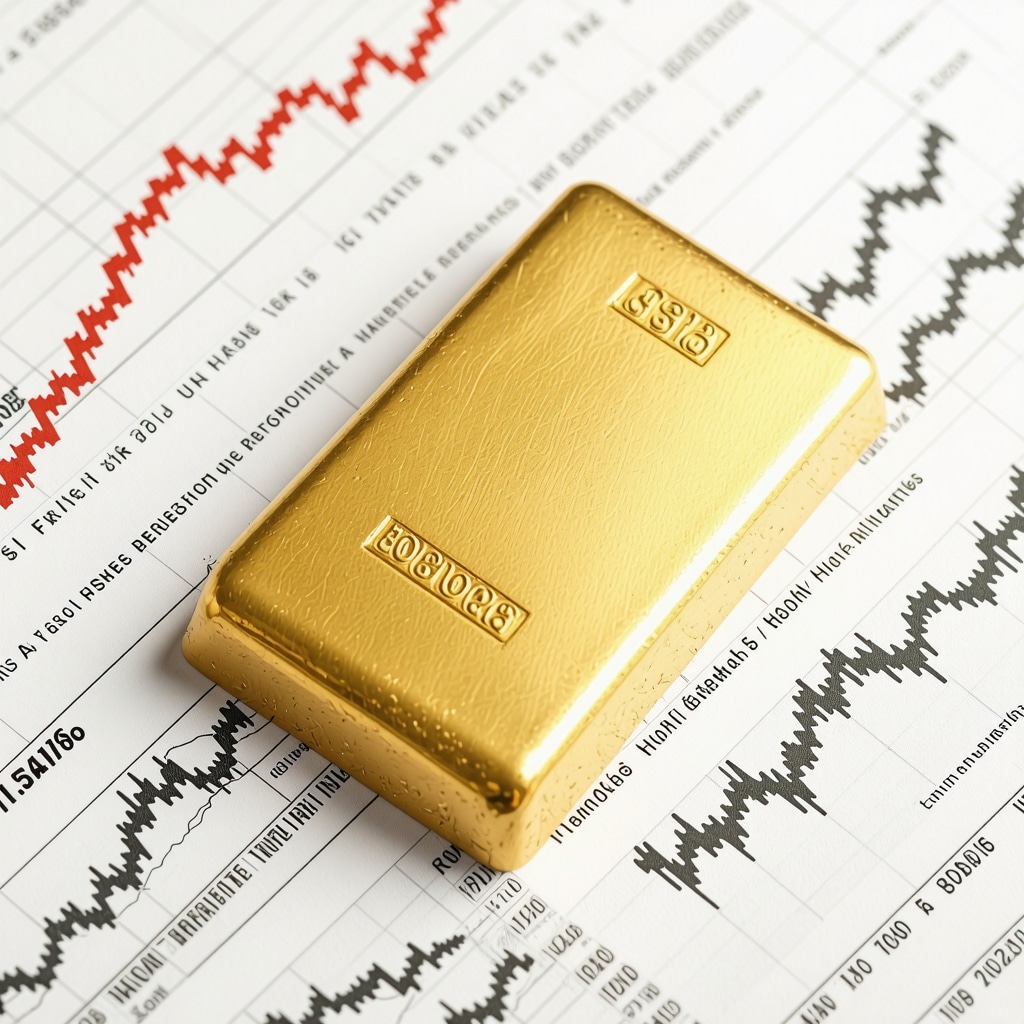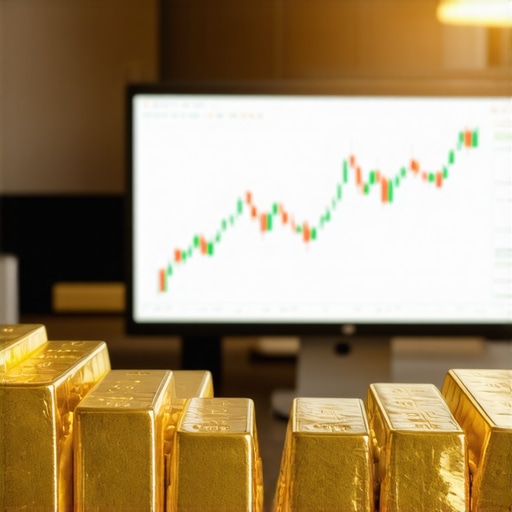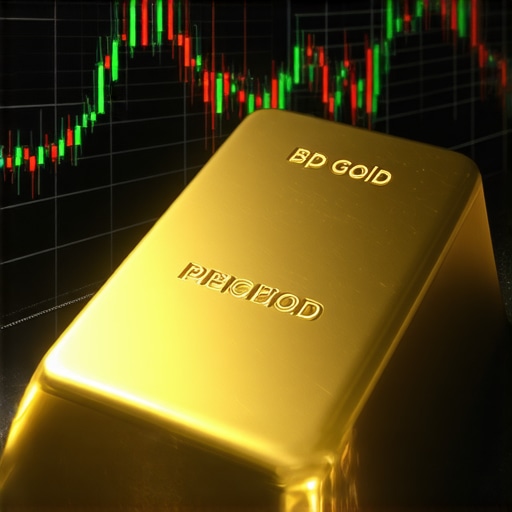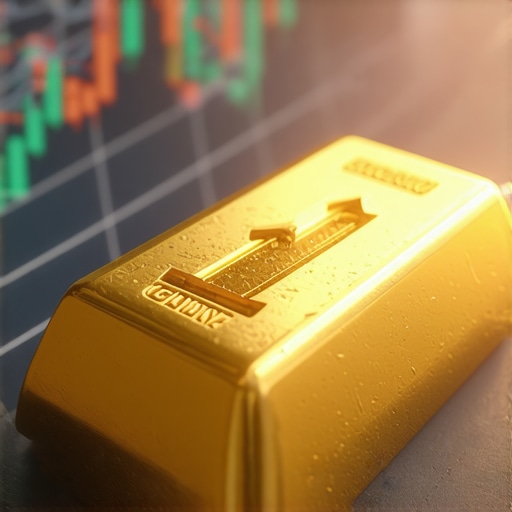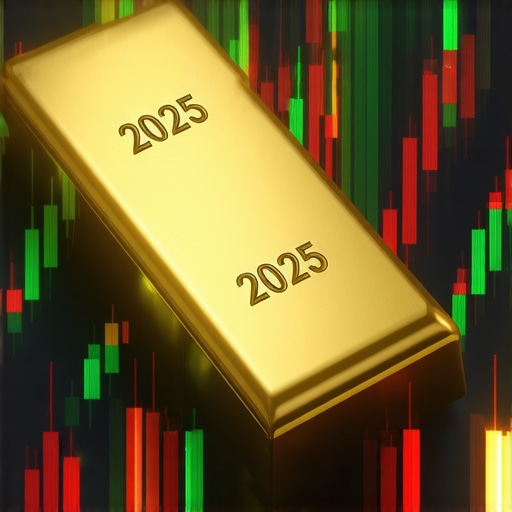Deciphering the 2025 Gold Price Trajectory: A Strategic Perspective for Investors
The landscape of gold investments in 2025 is shaped by an intricate web of macroeconomic forces, geopolitical tensions, and evolving market dynamics. As a seasoned analyst, understanding these layers is crucial for crafting resilient investment strategies that leverage gold’s unique properties as a hedge and growth asset. This article delves into the nuanced drivers influencing the 2025 gold price forecast, supported by empirical data and industry expertise.
Unveiling the Core Market Drivers in 2025
How Do Central Bank Policies Shape Gold’s Price Movements?
Central banks’ gold purchasing behaviors significantly influence market sentiment and price stability. In 2025, increased acquisitions by major institutions, driven by inflation concerns and reserve diversification efforts, are likely to underpin a bullish gold trend. According to a report by the World Gold Council, central bank gold reserves have been steadily rising, signaling confidence in gold as a strategic reserve asset (World Gold Council Central Bank Demand Report).
What Role Will Global Economic Uncertainty Play?
Economic turbulence, including inflationary pressures and potential recession risks, remains a pivotal factor. Gold’s historical role as a safe haven becomes even more pronounced amid geopolitical conflicts and currency fluctuations. Market analysts suggest that in 2025, the confluence of persistent inflation and monetary policy tightening will sustain elevated gold prices.
Technological and Industry-Specific Influences
How Will Emerging Technologies Impact Gold Demand?
Technological advances, especially in electronics and renewable energy, are expected to bolster gold’s industrial demand. Innovations in semiconductor manufacturing and green tech integration could lead to a structural increase in gold consumption, supporting higher prices.
Is Gold Still a Viable Hedge Against Inflation in 2025?
While traditional, gold’s hedge properties are being reassessed in the context of digital assets and evolving financial instruments. However, expert consensus affirms gold’s enduring role as a portfolio diversifier during inflationary cycles, especially with rising global debt levels and currency devaluations.
Expert Recommendations and Strategic Positioning
Investors aiming to capitalize on 2025’s market conditions should consider diversified gold investment vehicles, including physical gold, ETFs, and mining stocks. Resources such as gold mining stocks and advanced trading strategies can provide tailored exposure aligned with risk appetite.
How Can Investors Balance Risk and Opportunity in Gold Markets?
Engaging with expert insights and market analytics, such as those from industry reports and academic research, can optimize portfolio resilience. Monitoring supply-demand trends, especially mine output and central bank policies, remains essential for timely decision-making.
For comprehensive strategies, consider exploring demand trends in jewelry and tech sectors and price prediction models to refine your investment approach.
As the market evolves, the integration of quantitative analysis with macroeconomic intuition will be the hallmark of successful gold investment strategies in 2025.
Readers are encouraged to stay informed through authoritative sources and contribute their insights in professional forums to foster a dynamic investment community.
Decoding the Impact of Geopolitical Tensions on Gold Prices in 2025
Geopolitical tensions continue to be a significant driver of gold prices, especially as global conflicts and trade disputes influence investor sentiment. In 2025, escalating tensions in key regions such as Eastern Europe and the South China Sea could lead to increased demand for gold as a safe haven asset. According to a recent analysis by the International Monetary Fund, geopolitical risks often trigger short-term spikes in gold prices, but understanding the underlying geopolitical landscape is vital for long-term strategic positioning (IMF Geopolitical Risks Report).
How Do Technological Innovations Reshape Gold Investment Strategies?
Can Emerging Technologies Provide New Avenues for Gold Investors?
Emerging technologies like blockchain and digital gold are revolutionizing investment approaches, offering increased transparency and accessibility. Digital gold platforms enable investors to buy, sell, and store gold securely online, reducing costs and barriers. Moreover, blockchain technology enhances the traceability of gold transactions, fostering greater trust and compliance with regulatory standards. Industry experts suggest integrating these innovations into a diversified portfolio can optimize returns and mitigate risks, especially in volatile markets. To explore this further, consider reading about gold mining stocks and digital assets.
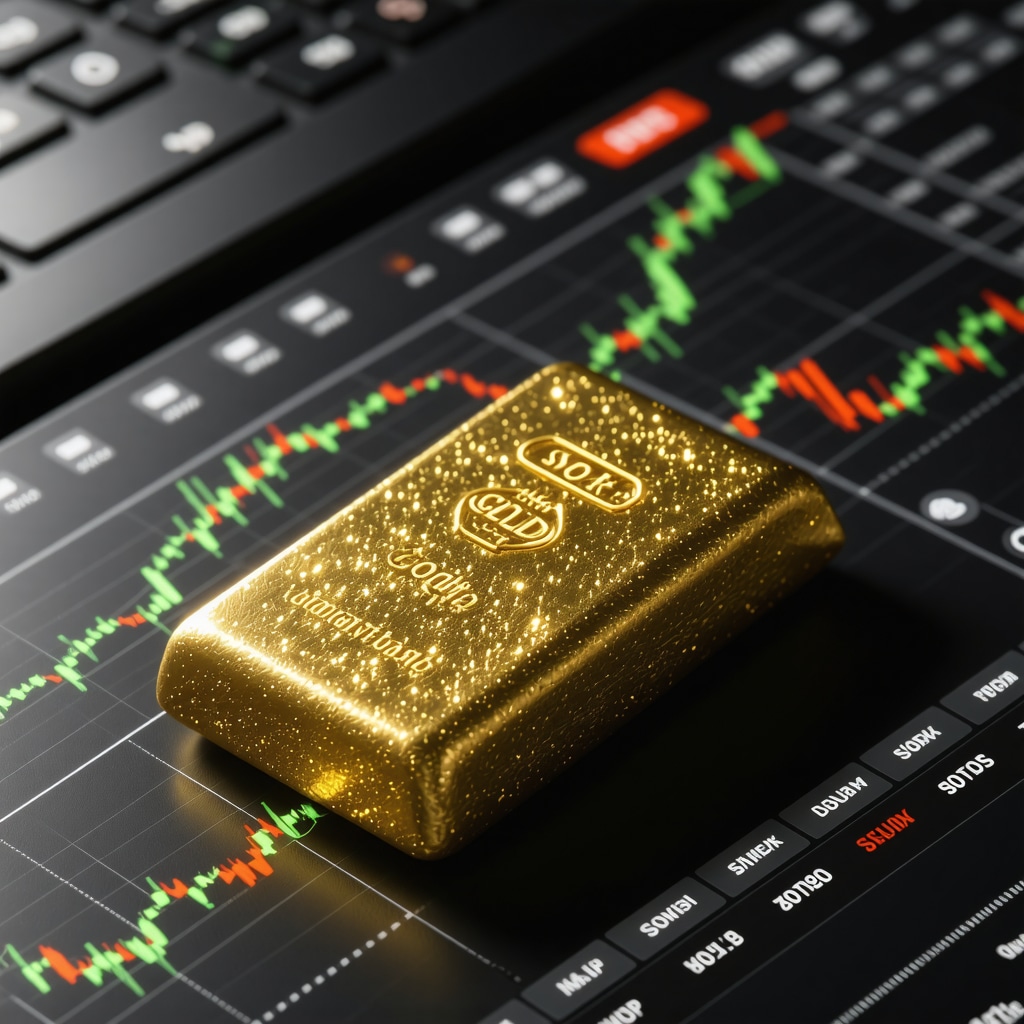
How Can Investors Leverage Market Sentiment and Technical Analysis?
Market sentiment and technical analysis are indispensable tools for timing gold investments effectively. By analyzing price charts, volume data, and sentiment indicators, investors can identify optimal entry and exit points. Advanced technical strategies, such as Fibonacci retracements, moving averages, and momentum oscillators, can provide actionable signals. Combining these with macroeconomic insights creates a robust framework for decision-making. For a detailed guide, see mastering gold trading techniques.
What Are the Key Risks and How to Hedge Against Them?
Market risks, including currency fluctuations, interest rate changes, and geopolitical events, require proactive management. Diversification across different gold investment vehicles—such as physical bullion, ETFs, and mining stocks—can help mitigate exposure. Additionally, employing hedging strategies like options and futures can protect against adverse price movements. Keeping abreast of supply-demand dynamics, especially mining output and central bank policies, enhances risk management. For comprehensive risk mitigation tactics, consult gold as a hedge in turbulent times.
Investors aiming to refine their approach should also consider expert analyses and market forecasts to adapt swiftly to evolving conditions. Sharing insights and engaging with community discussions can further sharpen strategic acumen, ensuring resilience and growth in the complex landscape of gold investments in 2025.
Innovative Approaches to Gold Investment: Harnessing Blockchain and Digital Assets for 2025
As we venture further into 2025, technological innovations continue to redefine gold investment paradigms. Blockchain technology and digital gold platforms are not merely trends but transformative tools that enhance transparency, security, and liquidity in gold trading. For instance, blockchain’s decentralized ledgers facilitate real-time traceability of gold transactions, bolstering investor confidence and compliance with regulatory standards (Finextra Blockchain Innovations Report).
Digital gold allows investors to buy fractional shares of physical gold, stored securely in insured vaults, accessible via mobile apps and online portals. This democratizes access, enabling smaller investors to participate in the gold market without the logistical hurdles of physical storage. Moreover, tokenization of gold assets introduces new liquidity channels, allowing for seamless trading and portfolio diversification.
Industry leaders are advocating for integrating these digital assets with traditional investment portfolios to optimize risk-adjusted returns. As the market matures, regulatory frameworks are also evolving, aiming to ensure investor protection while fostering innovation. To stay ahead, investors should consider platforms that comply with international standards, such as those outlined by the International Organization of Securities Commissions (IOSCO).

Strategic Portfolio Diversification: Balancing Physical Gold, ETFs, and Mining Stocks in 2025
In the dynamic landscape of 2025, diversification remains a cornerstone of resilient gold investment strategies. Physical gold provides a tangible hedge against systemic risks, especially during geopolitical upheavals or currency devaluations. Gold ETFs offer liquidity and ease of access, making them attractive for tactical trading and passive income generation.
Complementing these are gold mining stocks, which can offer leveraged exposure to gold prices. However, investing in miners requires a nuanced understanding of operational risks, geopolitical considerations, and commodity price sensitivities. Notably, companies with diversified portfolios and strong management teams tend to outperform during volatile periods. As per a comprehensive study by the World Gold Council, a balanced mix tailored to individual risk appetite can optimize returns while mitigating downside risks.
Financial advisors recommend regularly reviewing the portfolio’s composition, especially in response to macroeconomic shifts such as interest rate changes or technological disruptions in mining operations. Advanced analytics and market simulations can aid investors in forecasting potential outcomes and adjusting allocations proactively.
Deep Dive: How Do Geopolitical Tensions Sustain Gold’s Safe-Haven Status in 2025?
Geopolitical tensions, whether in Eastern Europe, the South China Sea, or the Middle East, exert profound influences on global financial markets. In 2025, escalating conflicts and trade disputes are expected to reinforce gold’s appeal as a safe-haven asset. According to the IMF’s recent report, such tensions often lead to short-term spikes in gold prices, driven by heightened risk aversion among investors (IMF Geopolitical Risks Analysis).
Investors should monitor geopolitical developments through real-time news feeds, diplomatic engagements, and intelligence reports. Incorporating geopolitical risk assessments into investment decision frameworks can provide a strategic edge, enabling timely entry or exit points in gold positions. Additionally, understanding the historical correlation between conflict intensity and gold price volatility can inform risk management protocols.
Furthermore, diversification into geographically resilient assets and the use of hedging instruments such as options can mitigate exposure to specific regional conflicts. Engaging with geopolitical risk experts and leveraging advanced analytics platforms enhances the ability to adapt swiftly to unfolding scenarios.
Harnessing Blockchain and Digital Innovation to Revolutionize Gold Investment Portfolios
As technological advancements continue to reshape financial markets, integrating blockchain and digital gold assets presents unparalleled opportunities for sophisticated investors aiming to optimize their 2025 gold strategies. Blockchain’s decentralized ledgers ensure unparalleled transparency, traceability, and security for gold transactions, significantly reducing fraud risks and enhancing compliance with international standards (Finextra Blockchain Innovations Report).
Digital gold platforms democratize access, enabling investors to acquire fractional shares stored in insured, secure vaults via intuitive online interfaces. This fractionalization not only lowers entry barriers but also enhances liquidity, allowing for seamless portfolio adjustments aligned with market conditions. Moreover, tokenization of gold assets facilitates rapid trading and diversification, catering to institutional and retail investors seeking agility in volatile environments.
Integrating these digital solutions with traditional holdings creates a hybrid approach, leveraging the benefits of physical gold’s stability with the flexibility of digital assets. Regulatory frameworks are evolving to support this integration, emphasizing investor protection and operational transparency. Staying informed about IOSCO standards and advances in digital asset regulation can provide a competitive edge in this emerging landscape.
Strategic Diversification: Balancing Physical Gold, ETFs, and Mining Stocks for Optimal Resilience
In 2025’s complex market environment, diversification remains an indispensable tactic for safeguarding wealth and capitalizing on gold’s unique attributes. Physical gold provides tangible security against systemic risks, especially during geopolitical unrest or currency devaluations. Gold ETFs offer liquidity and ease of trading, serving as tactical tools for short-term positioning or passive income streams. Complementing these, gold mining stocks offer leveraged exposure but require careful selection based on operational strength, geopolitical stability, and management quality.
Research from the World Gold Council underscores the importance of a balanced portfolio, tailored to individual risk tolerances and market outlooks. Advanced analytics, including Monte Carlo simulations and macroeconomic scenario modeling, can forecast potential outcomes and inform dynamic rebalancing. Regular portfolio reviews, especially amid shifting interest rates or technological disruptions in mining operations, are vital for maintaining resilience and optimizing returns.
By combining physical holdings with exchange-traded funds and carefully selected mining stocks, investors can craft a resilient, adaptable gold investment strategy capable of weathering diverse economic storms.

Decoding the Long-Term Impact of Geopolitical Tensions on Gold’s Safe-Haven Status in 2025
Escalating geopolitical conflicts, whether in Eastern Europe, the South China Sea, or the Middle East, continue to anchor gold’s reputation as a reliable safe-haven asset. In 2025, these tensions are anticipated to sustain elevated gold prices, driven by heightened risk aversion and diversification needs among global investors. The IMF’s recent geopolitical risks report highlights how regional conflicts and trade disputes correlate with short-term price spikes, but strategic investors recognize the importance of understanding underlying geopolitical dynamics for long-term positioning (IMF Geopolitical Risks Analysis).
Proactively monitoring real-time geopolitical developments, diplomatic negotiations, and intelligence reports enables investors to anticipate market reactions and adjust exposure accordingly. Incorporating geopolitical risk assessments into quantitative models, alongside historical correlation analyses, enhances decision-making precision. Diversifying holdings geographically and employing hedging instruments such as options and futures can further mitigate regional risks, ensuring portfolio resilience amidst ongoing conflicts.
Engaging with geopolitical experts and utilizing advanced analytics platforms will be crucial for maintaining agility and safeguarding wealth in a landscape characterized by persistent geopolitical volatility.
Expert Insights & Advanced Considerations
1. Central Bank Policies as Market Catalysts
Major central banks’ gold reserve adjustments in 2025 are likely to serve as primary market catalysts, signaling shifts in monetary policy and geopolitical trust. Understanding these dynamics allows investors to anticipate price movements and align their portfolios accordingly.
2. The Role of Technological Innovation
Emerging blockchain platforms and digital gold tokens are transforming liquidity and transparency in gold investments. Staying informed of these innovations can provide a competitive edge in diversifying and optimizing your holdings.
3. Geopolitical Tensions and Safe-Haven Demand
Heightened geopolitical conflicts in regions like Eastern Europe and Asia are expected to sustain gold’s safe-haven appeal, influencing long-term strategic positioning and risk management practices.
4. Diversification Strategies
Integrating physical gold, ETFs, and mining stocks remains essential. Employing advanced analytics for dynamic rebalancing can help mitigate risks associated with market volatility.
5. Monitoring Supply-Demand Trends
Supply shocks from mining output and technological demand should be closely tracked. This intelligence supports proactive decision-making in portfolio adjustments.
Curated Expert Resources
- World Gold Council Reports: Authoritative insights into central bank demand and market trends, essential for macroeconomic analysis.
- IMF Geopolitical Risks Analysis: In-depth assessments of geopolitical tensions impacting global markets, critical for risk mitigation.
- Finextra Blockchain Innovations: Cutting-edge developments in blockchain applications for gold trading, vital for understanding digital transformation.
- IOSCO Regulatory Standards: International guidelines ensuring compliance and transparency in digital gold investments.
Final Expert Perspective
In the evolving landscape of gold investment for 2025, integrating macroeconomic insights, technological advancements, and geopolitical awareness is paramount. The strategic use of gold—whether physical, digital, or through equities—will determine resilience and growth. As professionals, we encourage ongoing education, active monitoring of market signals, and engagement with authoritative resources to navigate this sophisticated environment effectively. For those committed to excellence, deepening your understanding through these expert tools and insights can unlock new opportunities and safeguard your wealth amidst volatility. To contribute your insights or explore advanced strategies, connect with our professional community and stay ahead in this complex market landscape.






